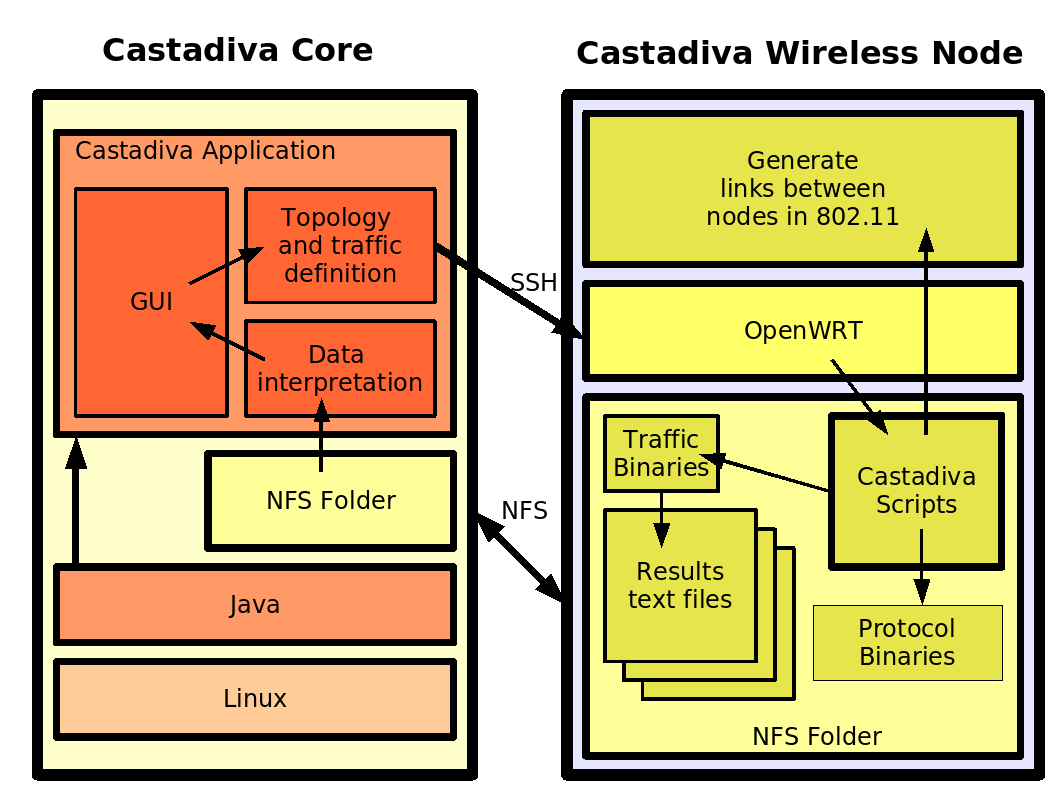Castadiva Implementation
Castadiva requires some libraries and services to operate. The requirements of Castadiva are different for the server and the wireless nodes. The server must be a standard Linux-based system and must have a Java Virtual Machine, an SSH client and an NFS server installed. Concerning nodes, each one must be a Linux based system with an SSH server and an NFS client; besides, they must have the libgcc library and have the Iptables toolset installed

The connection between Castadiva's core element (server) and each node is made using both SSH and NFS connections. On Castadiva's server, the user interacts with the GUI application by defining the network topology, the traffic and selecting the desired routing protocol. Then, through SSH, the application sends a start instruction to each node through the coordination network (wired). Wireless nodes achieve coordination among themselves by executing the required binaries, which are stored into a server folder shared through NFS. This is an easy way to spread instructions to all nodes, and it also solves storage limitation problems on nodes. When tests start, a group of files with the results are created and stored into Castadiva's server. Each individual router accesses its own configuration file by relying on the NFS filesystem. We find that Ethernet connections are fast enough to export these files to the routers without significant delays. The main application parses the results, obtaining the different testbed statistics. Finally, the application displays results to the user.

